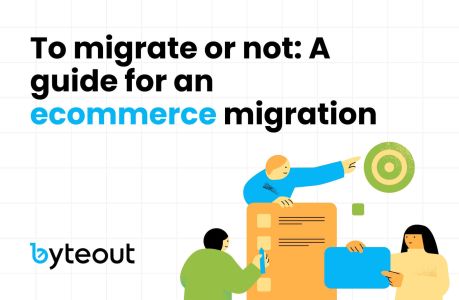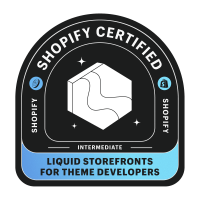
To migrate or not: A guide for an ecommerce migration
Switching ecommerce platforms. Is this your nightmare? Is this haunting you?
Jokes aside, it’s not an easy decision to make because it means you should transfer all data and details to a whole new system. This decision comes as an answer to some issues that are holding you back in your ecommerce journey.
With the right approach, the whole process can be easy, or at least not so hard. A successful migration can lead to better performance, enhanced features, and improved scalability for your online store.
Let’s go through this simple guide for an ecommerce migration.
Table of Contents
Deciding to migrate your ecommerce platform
Before taking all the steps, you must decide if migration is necessary for your ecommerce business. This decision often comes from your tech team or external ecommerce development team, who can spot the need for a change.
Common signs that it’s time to consider migrating your ecommerce platform include performance issues, limited features, scalability concerns, poor user experience, cost efficiency, and security risks.
If your site is slow, missing out on some important features your customers are asking about, struggling to scale, frustrating users, too expensive to maintain, or vulnerable to security threats, it’s likely time for a change.
Not sure if you need a migration? We offer a free assessment to help you determine if migrating your ecommerce platform is the best move for your business. Let’s talk!
Guide for an ecommerce migration – the steps
Let’s break the process of ecommerce migration into manageable steps to make it easier. The steps go from planning and preparation to execution and post-launch.
Planning
The first step is planning – it’s almost half of the process. If you do this correctly, the process will be easy. It means it won’t give you headaches. 😌
Define your goals clearly. Are you looking for better performance, new features, or a fresh design? Perhaps scalability is your primary concern. Knowing what you want to achieve will shape the entire migration process.
Set a realistic budget and timeline. Migrations can be complex and time-consuming, so planning your finances and schedule is essential to accommodate potential hiccups.
Assemble your team. Whether it’s your in-house team or you’re partnering with a team like ours, make sure everyone knows their role. Clear communication is essential to keep things on track.
Research various ecommerce platforms. Not all platforms are created equal, so spend time evaluating which best fits your business needs regarding features, scalability, and cost. Consider platforms like Shopify, Magento, WooCommerce, and BigCommerce.
📖 Ecommerce platforms: WooCommerce vs BigCommerce vs Shopify
Preparation
Preparation is the other half of the work.
Start by backing up all your data. This includes product details, customer info, and order histories. Losing data during migration can be a nightmare, so ensure you have everything securely backed up.
Create a site map of your current website. This will help ensure nothing gets lost in the move and will be a useful reference when setting up your new site.
Conduct a thorough audit of your content. Review everything and decide what’s worth keeping, what needs updating, and what can be discarded. Be careful with this.
Notify your customers about the upcoming migration. Inform them about any potential downtime or changes that might affect them. Keeping your customers informed minimizes confusion.
Execution
Now comes the execution phase. The most important one.
Set up your new ecommerce platform. This means installing necessary plugins, configuring settings, and preparing for data migration. Make sure everything is set up to match your business needs and this migration’s goals.
Carefully transfer all your data from the old site to the new one. Double-check everything to ensure no data is lost or corrupted during the process.
Recreate your website’s design on the new platform. Or make a totally new one? This is your chance to refresh and modernize your look. Ensure the design is user-friendly and represents your brand well.
Implement 301 redirects from your old URLs to the new ones. This helps maintain your SEO rankings and ensures visitors find the correct pages on your new site. SEO has a really important role in the migration process so don’t overlook it.
The execution should be done correctly. Think about hiring a team that’ll be in charge of the migration process.
Testing
Test, test, test – how many times did you hear this? 😅
Test every part of your site to make sure it all works correctly. This includes product pages, shopping carts, and checkout processes. Catch any issues before your customers do.
Ensure your site loads quickly and handles traffic well. A slow site can drive customers away, so this step is your top priority.
Test your site on various devices to ensure it looks and functions well everywhere. Mobile compatibility is particularly important as more customers shop on their phones.
Verify your SEO settings. Make sure all meta tags, keywords, and descriptions are properly set up to maintain your search engine rankings.
Launch and post-launch
Finally, it’s time for the launch. What should you know about this?
Go live during a low-traffic period to minimize disruption. This allows you to address any immediate issues without affecting too many users.
Monitor your site’s performance with analytics tools. Look for issues and be ready to fix them quickly. Also, monitor site speed, user behavior, and any errors that may pop up.
Listen to what your customers are saying about the new site. Gather feedback and use it to make any necessary adjustments. Your users can provide valuable insights – from the first row.
Your work doesn’t stop once the site is live. Check and update it regularly to keep it running well.
- Top 5 signs it’s time for Shopify migration services
- Is it time to migrate WordPress to Shopify?
- Should you switch from Magento to Shopify?
- Do ecommerce newsletters still work in 2024
- 5 signs you need an ecommerce consultant (before things get messy)
A guide to an ecommerce migration – what does it say
This guide to an ecommerce migration says one thing: go for the migration if your business needs it. Migrating your ecommerce site can be a big job, but with careful planning and a high-quality execution, it’s entirely manageable. And remember, you don’t have to go it alone. ✨
Ready to make the switch? Get in touch with us!

